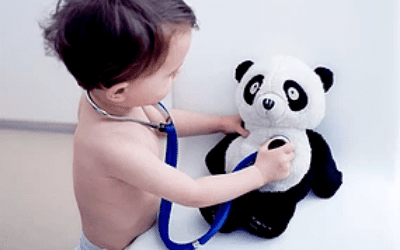
The hospital or doctor’s office can be a place ridden with anxiety for people of all ages. Children in particular tend to regard the pediatrician’s office or the hospital as a place of impending pain. Even healthy children, the routine well-visits are scheduled in such a way that they receive twenty-five immunizations before they turn fifteen months old, not to mention blood draws for lead levels. The timing and the dosing of these vaccines are due to two reasons: they are given at a time when the immune system works best, and the earliest possible to provide children with the protection they need.
Pain has always been one of the more overlooked aspects of pediatric care, or in theart of medicine for that matter. Children who experience pain may develop fear and anxiety that could last into adulthood. As parents, we ourselves cringe at the sight of needles and even leave the treatment room during our chiild’s immunizations. Immunizations are a must. There is no way around it. However, the environment and the events leading up to vaccine time are things we can work on to help make the vaccination experience less traumatic.
Here are a few tips on how to make the vaccination visit more bearable for you and your baby:
Plan ahead. Make sure you know if your child will have vaccinations during this particular visit. If he is, it might be a good idea to give him some pain reliever half an hour to an hour before the shots are given. Make sure you check with your physician regarding dosage and which pain reliever to give (e.g. Acetaminophen, Ibuprofen). Some offices have the option of using a shot blocker (a small rubber contraption that temporarily confuses pain sensors), or a topical numbing cream at your request.
Keep calm. Don’t talk about the ordeal the morning or days before the visit. This willcause unnecessary stress and anxiety form the pain anticipation. You need to relax too. You will be the one person your child will look up to for support. You need to set an example that this should not be a traumatic experience.
Bring a distraction. It is always a good idea to keep your child’s attention somewhere else rather than focusing on the number of syringes slowly being prepared in the treatment room. A new toy or a new book usually does the trick.
Do not hold him down. Make sure even as you hold him you are doing so in a position that he is comfortable in.
Once the shots are given quickly, praise him for a job well done and let him know that it is all over. Children aim to please. This should encourage them to be brave the next shot schedule comes around. Never use the vaccinations as a form of punishment or as leverage to get your way.
The immunizations are a small but important part of the regular check-ups. The pediatric visit should be all about prevention, assessment and reassessment, an open dialogue between the parent, the child, and the physician. They should be about what the parent will expect the next few months, what types of nutrition is best for the child, making sure our children grow healthy and strong.
Needles? Big deal.



